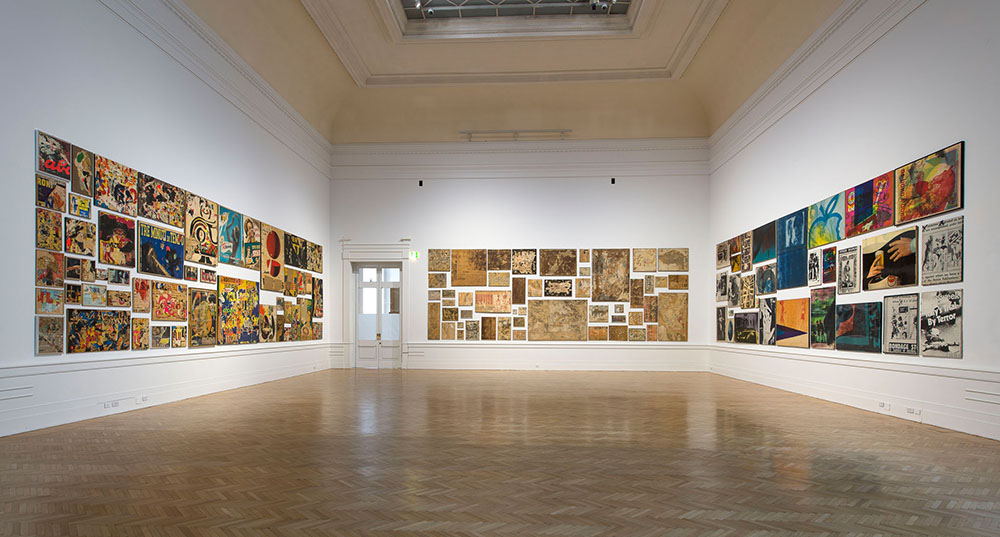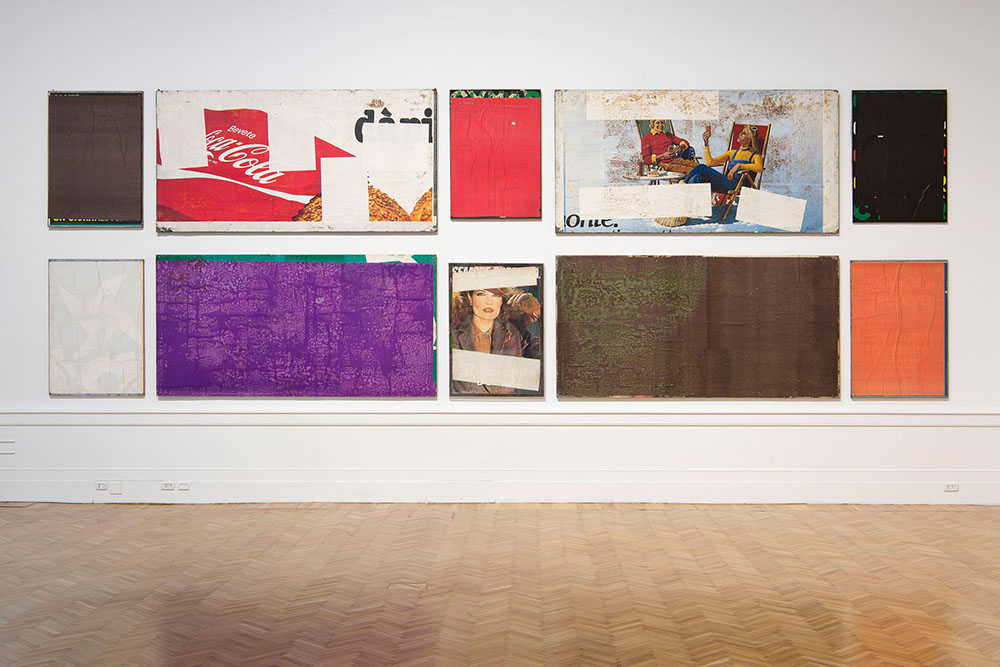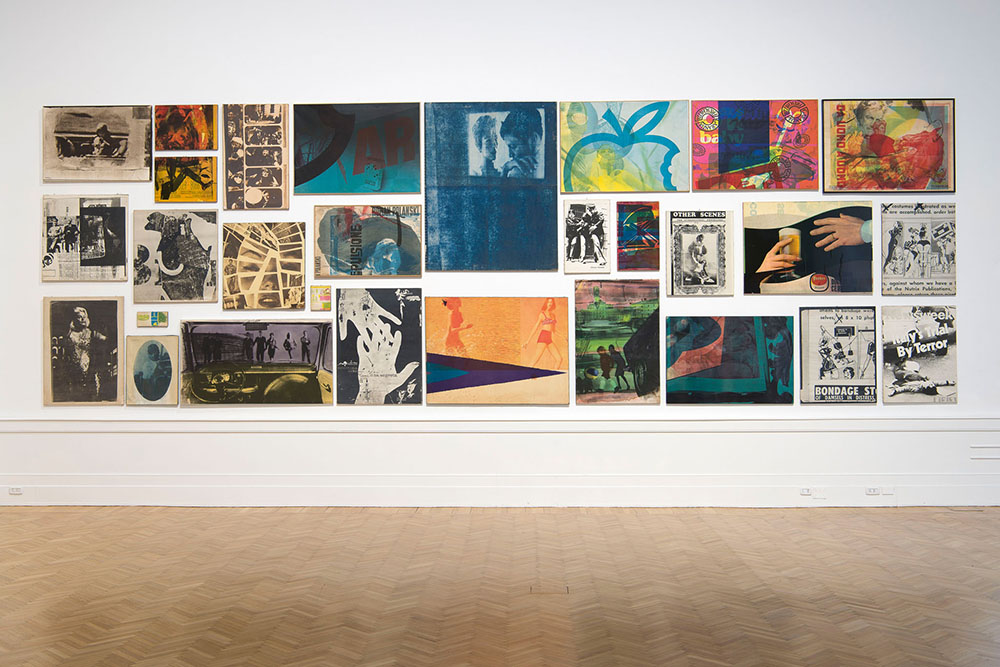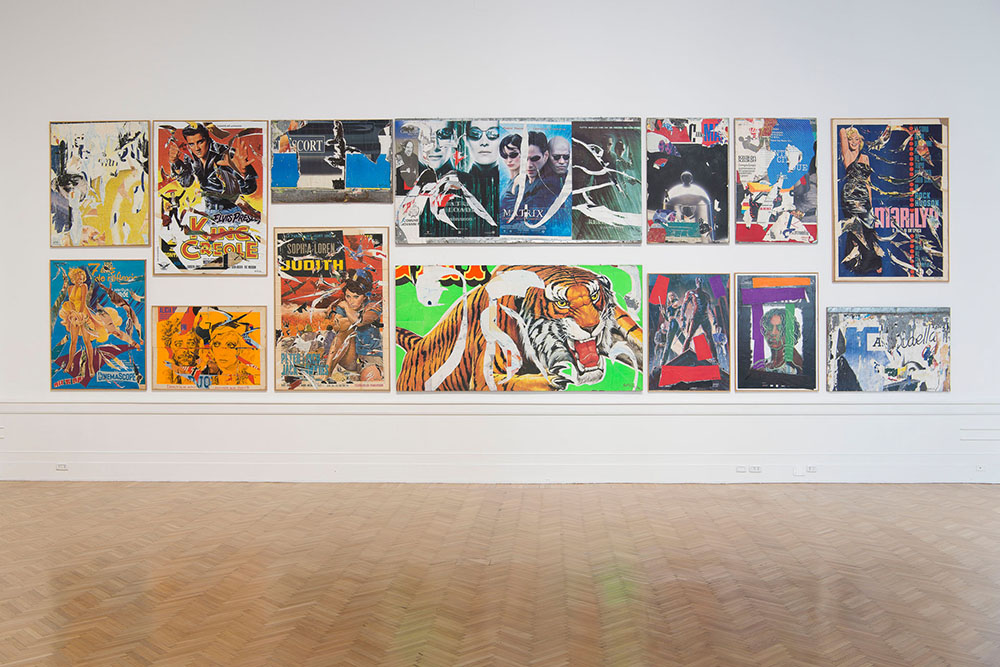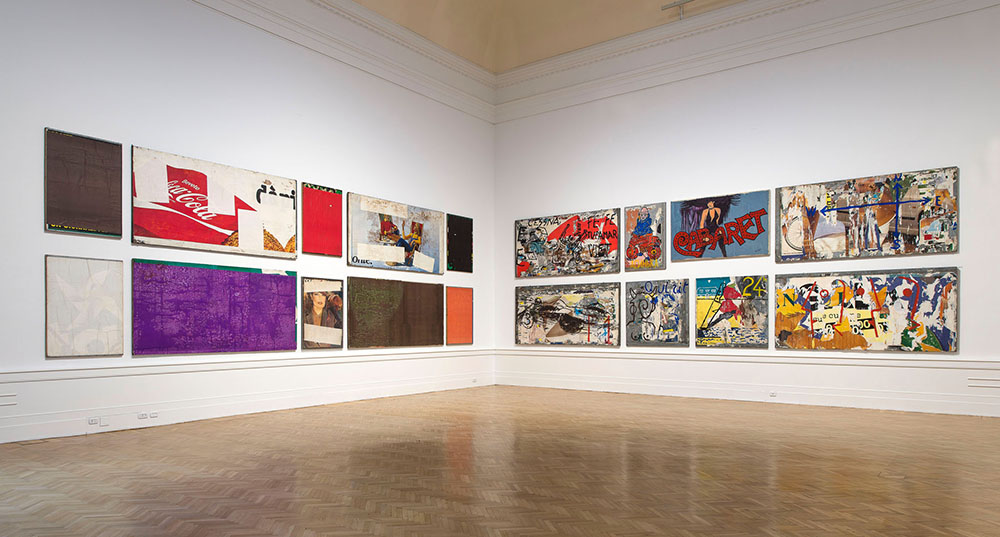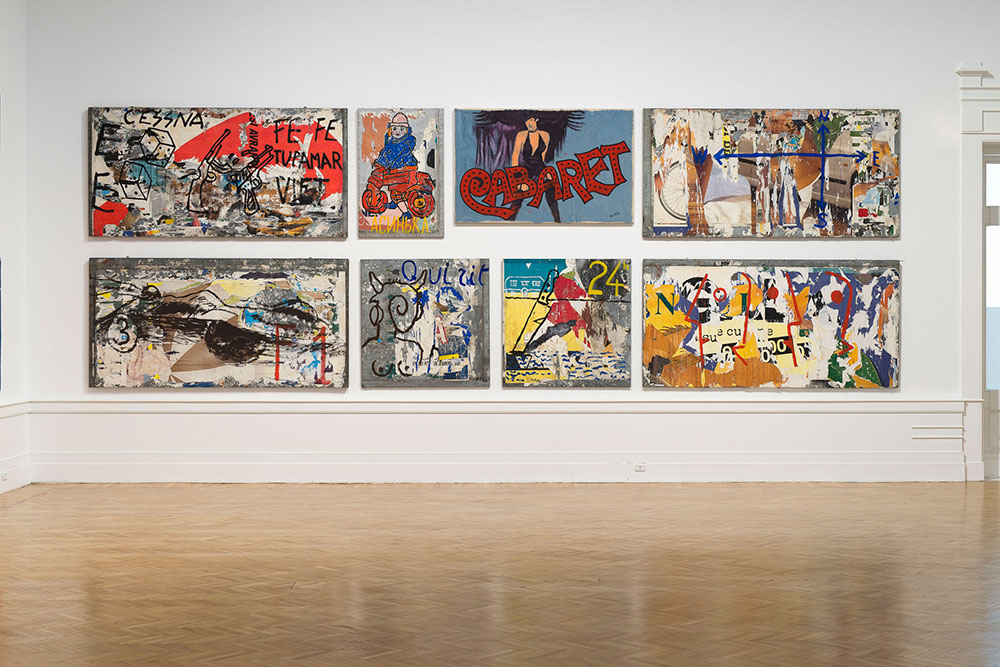ART-PRESENTATION: Mimmo Rotella-Manifesto
 The impact of Mimmo Rotella (7/10/1918-8/1/2006) was one of the pioneering artists of the 20th Century is evidently present throughout contemporary landscapes of visual culture. Rotella’s eye for “reporting” culture and commentary on cultural politics have made an immeasurable impact on the theoretical discourse surrounding contemporary artistic production techniques. His work is famous in suggesting a concept of ‘fresh vision’ on accepted reality and poetic inspiration in what appears banal.
The impact of Mimmo Rotella (7/10/1918-8/1/2006) was one of the pioneering artists of the 20th Century is evidently present throughout contemporary landscapes of visual culture. Rotella’s eye for “reporting” culture and commentary on cultural politics have made an immeasurable impact on the theoretical discourse surrounding contemporary artistic production techniques. His work is famous in suggesting a concept of ‘fresh vision’ on accepted reality and poetic inspiration in what appears banal.
By Dimitris Lempesis
Photo: Galleria Nazionale Rome Archive
On the centenary anniversary of Mimmo Rotella’s birth, the Galleria Nazionale d’Arte Moderna e Contemporanea of Rome, the Mimmo Rotella Foundation and the Mimmo Rotella Institute of Milan celebrate the Italian artist with the exhibition “Mimmo Rotella Manifesto”. With 160 works on view the exhibition aims to present the most exhaustive scientific overview of his oeuvre. The presentation of the exhibition stems from the layout of the Salone Centrale of the Galleria Nazionale and interprets the exhibition space as a large interior ‘square’ surrounded by walls or facades of buildings. The selected works compose six poster-ensembles, each one focused on one of the main techniques with which the artist experimented and the starting point of which was always the reworking of an advertising poster. Mimmo Rotella was born in 1918 in Catanzaro, Italy, but when he’s just 12 years he moves to Naples to study art. In 1944 he graduates from the artistic high school of Naples, and starts to teach art in Catanzaro. One year later he is in Rome and starts to experiment with a new-geometrical style. From 1947 he begins to participate to his first expositions and in 1949, he concentrates on his experiments about the phonetic poetry. His first personal exhibition is in 1951 in the Chiara Chiurazzi Gallery, but his works don’t have much success. In the same year he has the first contacts with foreign art, expecially from France and the USA. Thanks to a Fullbright grant he goes in the USA as an Artist in Residence, in the Kansas University. In Kansas City he has another personal exhibition in the Rockhill Nelson Gallery. This experience allows Rotella to discover all the most important American artists of those years. After a short stop in his artistic production, he starts with the “Decollages”. Mimmo Rotella takes all the comunicative strenght of the commercial ads on the posters, and then he puts them together on the canvas. His first exposition of this kind of artworks takes place in Rome, at the exhibition “Esposizione dell’arte attuale”. In Décollage, the posters torn off the city walls are assembled in the studio and lacerated a second time by hand, using the handle of a brush or a cutter. They are then attached to different media: cardboard, wood panel, Masonite, linen or jute canvas or metal plate, by applying Vinavil diluted with water. This technique was used starting from 1953, at the same time of the Retro d’affiches. As with the previews series, basic element for creating the Retro d’affiches were the posters taken by the artist directly from the street. The same manipulation technique was applied to the other side of the paper (the verso), on which there often remain traces of rust, glue, flakes of paint or other deposits. This technique was used starting from 1953, at the same time of the décollages. The Photographic reproduction is used since 1963 and consists of two main groups: the socio-political reportages and the portraits. The subject of the first are pages or clippings from magazines or newspapers, then photographed. Later, the negatives are projected on a canvas treated with photographic emulsion in order to fix the image. For the portraits, instead, the subject is photographed directly by the artist, while the other stages of the process remain unchanged. In the Artypo the artist makes a selection from the printing proofs used to control the register and quality of the images and colors. These are posters normally destined for the shredder, since they are used to warm up the press and various images are overprinted on them random. Later, the selected posters are either mounted on canvas or plasticized by Rotella, who executed his first Artypos in 1964. Frottage: Starting from the classical technique–which consists in reproducing an object by placing a sheet of paper over it and rubbing this with a color medium to make the form appear–Rotella processes a particular version of it sprinkling a nitrate solvent onto the pages taken from magazines and transferring the image obtained to a sheet of white paper. The tone of color of the starting images undergoes a sophisticated and controlled depletion. Not infrequently Rotella was used to compose several images onto the same medium. The technique of Effaçage consists in cutting pieces of paper out of magazines and newspapers and brushing them with a solvent (such as trichloroethylene) so that the image represented on the paper was partly or wholly bleached of is color. Rotella produced his effaçages during the Seventies. In Copertura or Blank, one or more monochrome sheets are glued over the selected poster by Rotella, creating blank areas in the original image, according to different aesthetic and compositional criteria. The first “blanks”, as the French art critic Pierre Restany called them, were produced in starting from the winter between 1980 and 1981, and mainly in the following two years. Finally the sovrapittura (overpainting) consists in the artist’s interviewing graphically or pictorially on a poster that is intact or has been torn previously, using acrylic colors. In the exhibition, other elements such as documents, an effaçage, drawings, small pictorial works on canvas and on paper are explored in display cabinets organised in chronological order, full of references to the works installed in the poster-ensembles. Photographs, catalogues and selected letters allow us to contextualise and understand the artist’s activity: from the “Manifesto dell’Epistaltismo” of 1949 to the “Phonetic poems” of 1975, from the confessions contained in the diaries of 1993-1994 to the assignment of the Gold Medal for Lifetime Achievement awarded to him in 2002. Outside the Salone-square, two further little “piazzette” are positioned in a symmetrical position. These rooms have made it possible to include Rotella’s performative works and sculptures into the exhibition. They are complementary spaces that on the one hand feature films from the 1950s and on the other, in parallel, his activity in the sculptural field through the series of Replicanti of 1990: ten porcelain elements which by their title and appearance (somewhere between Pop and surreal) allude to a humanity reduced to a replicant of itself and without feelings, such as that marked by the wars under way around the world.
Info: Curators: Germano Celant and Antonella Soldaini, The Galleria Nazionale d’Arte Moderna e Contemporanea of Rome, viale delle Belle Arti 131, Rome, Duration: 30/10/18-10/2/19, Days & Hours: Tue-Sun 8:30-19:30 http://lagallerianazionale.com
